Meadow garden in gravel at Olbrich Botanical Gardens
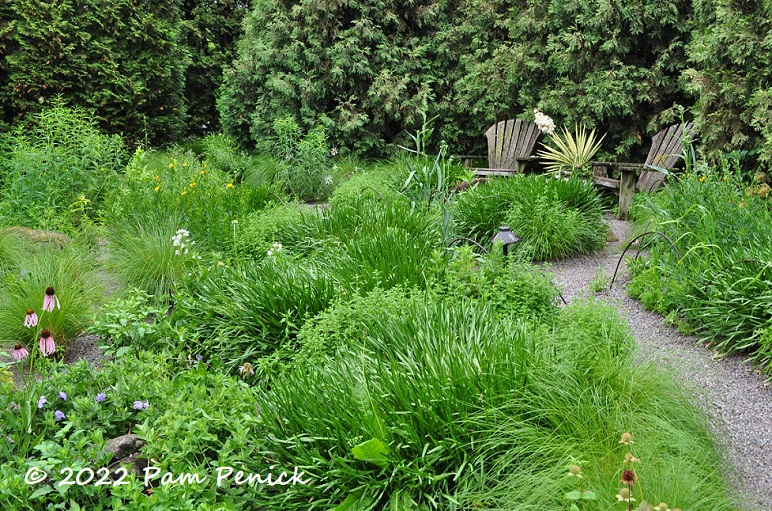
I keep hearing about a new way of planting in gravel to make easy-care, low-weed, low-water gardens. The idea is, you scrape away 4-to-5 inches of soil, add a 6-inch-high barrier around the planting bed to contain the gravel at a consistent depth, spread 4-to-5 inches of clean, washed gravel, and plant directly into the gravel, teasing off much of the soil from the root ball to encourage roots to grow down into the soil, and to prevent weed seeds from finding bare soil that gives them a foothold.
Jeff Epping, director of horticulture at Olbrich Botanical Gardens in Madison, Wisconsin, has been leading the gravel-garden movement in the Midwest (along with Roy Diblik of Northwind Perennial Farm). His personal garden is gravel-planted, and he’s created multiple gravel-planted gardens at Olbrich. According to Margaret Roach, who interviewed Epping for a recent New York Times article, gravel-planted gardens “may require 80 percent less work.”
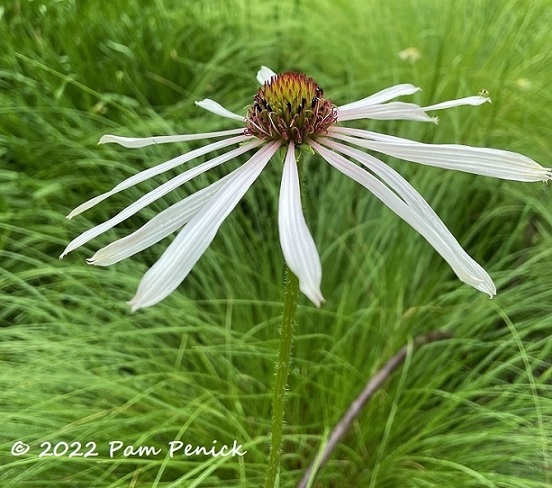
I’m curious to know if anyone is planting this way in Central Texas, and how it’s working out in our much hotter, drier climate. Here in Austin I see a lot of desert-style gardens mulched with a layer of decomposed granite (DG), and they quickly fail unless somebody’s out there diligently weeding Bermudagrass, spurge, nutgrass, purslane, and other weed seedlings. What we’re talking about here is different. The gravel is 3/16″ to 1/2″ and angular — and, crucially, not DG, a medium that weed seeds love.
I will just add that I use DG for a low-cost path material in my own garden, and it’s useful. Just be sure to tamp it tightly several inches deep to discourage weeds and remove weed seedlings as soon as they appear.
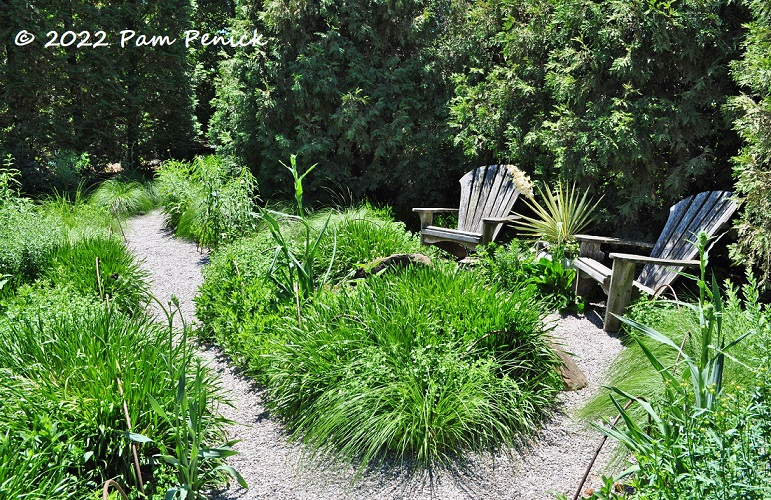
I had the opportunity to see one of Olbrich’s gravel gardens firsthand during the Madison Fling in June. I found it lovely even out of peak bloom season, when the predominant color was green. (See the NYT article for a photo of it in peak bloom.) Gravel paths meander through dense tufts of prairie dropseed, coneflowers, and alliums in this sunny space.
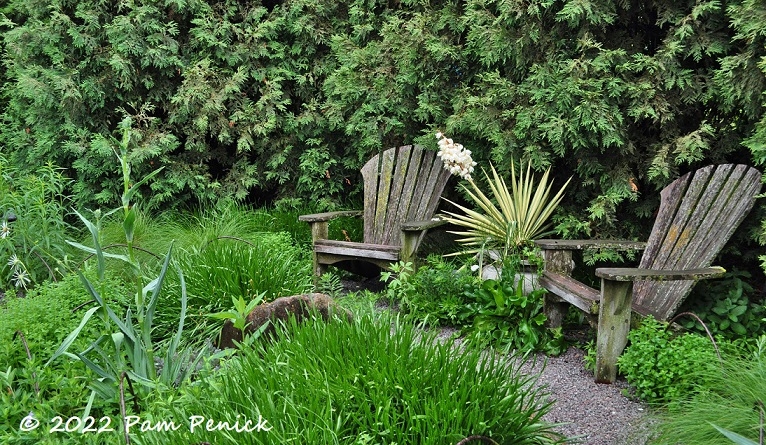
A flowering, golden-leaved yucca accents a pair of Adirondacks nestled against a hedge.
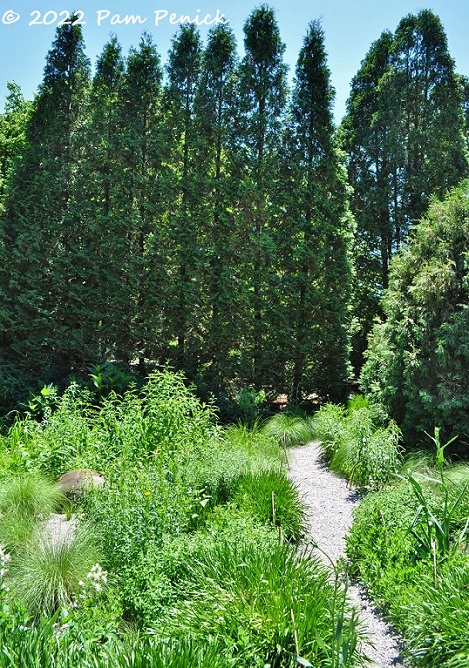
The long view — an inviting path through tightly knitted plants, with a vertical hedge of trees screening the way ahead.
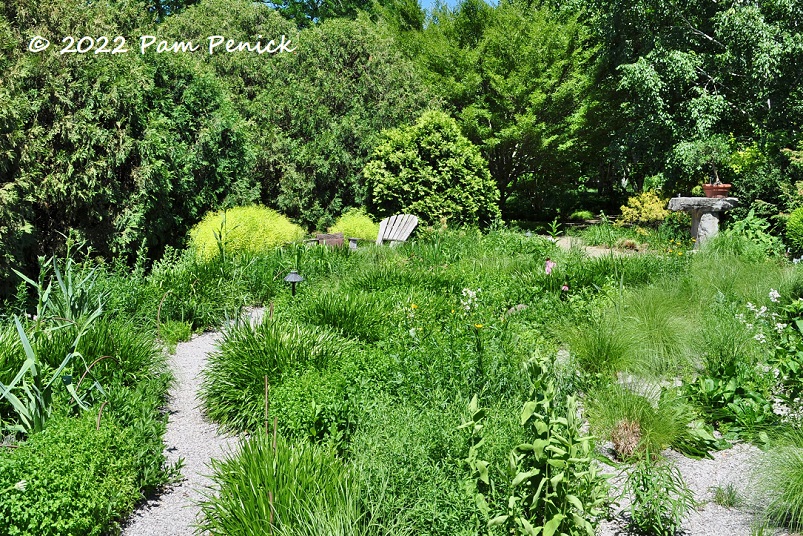
I can’t remember now if this is the same garden or a similar one. A mound of chartreuse plants attracts your eye…
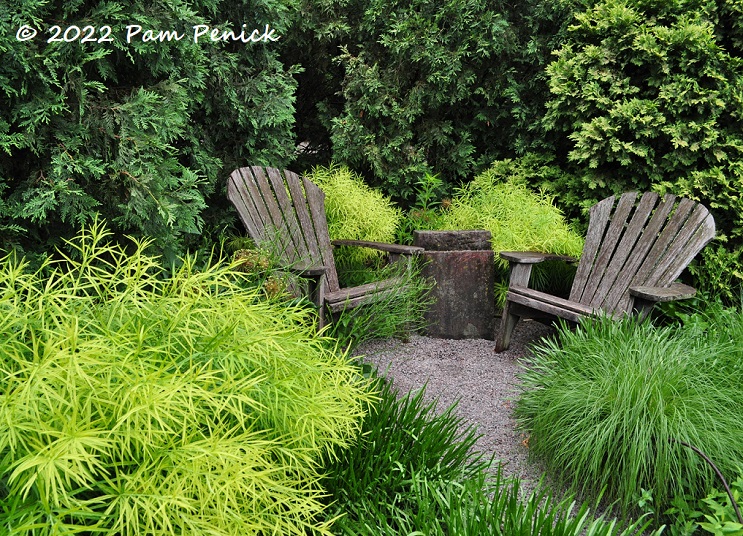
…to a hidden seating area for two — so inviting!
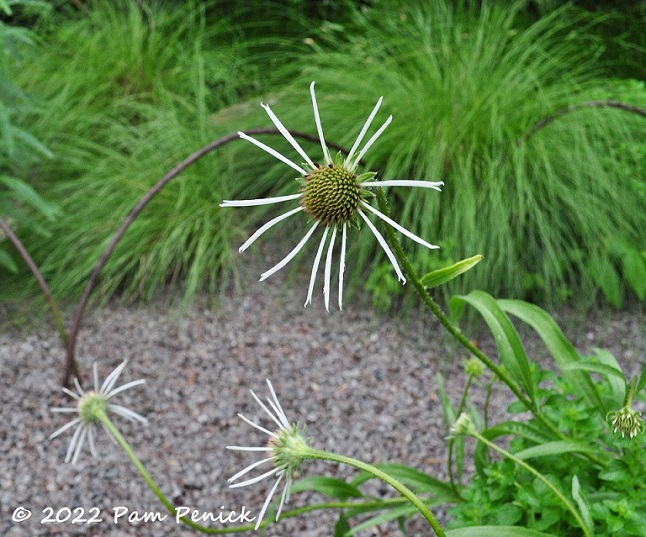
A few coneflowers were blooming.
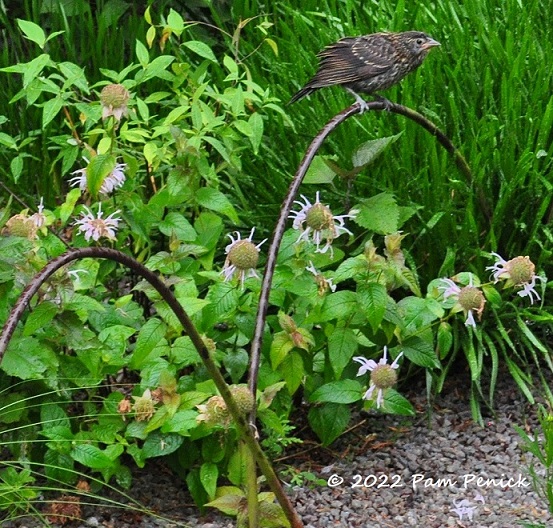
A young red-winged blackbird hopped along the path and perched on path-edging hoops, waiting, I expect, for mom or dad to show up with a meal.

Could this be Papa red-winged blackbird?

The Perennial Garden with a boulder-strewn pond was alive with birdsong. I spotted a Baltimore oriole here too.
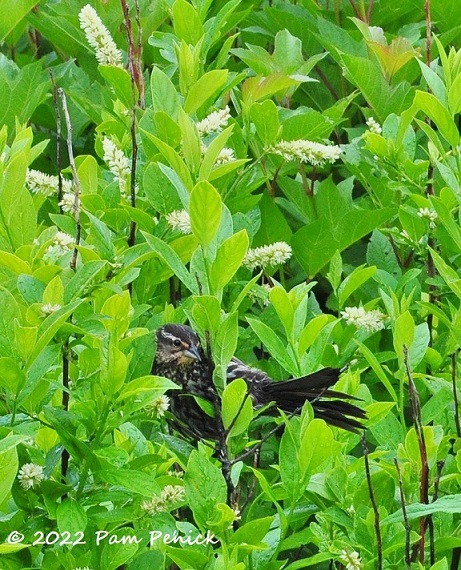
And another young red-winged blackbird
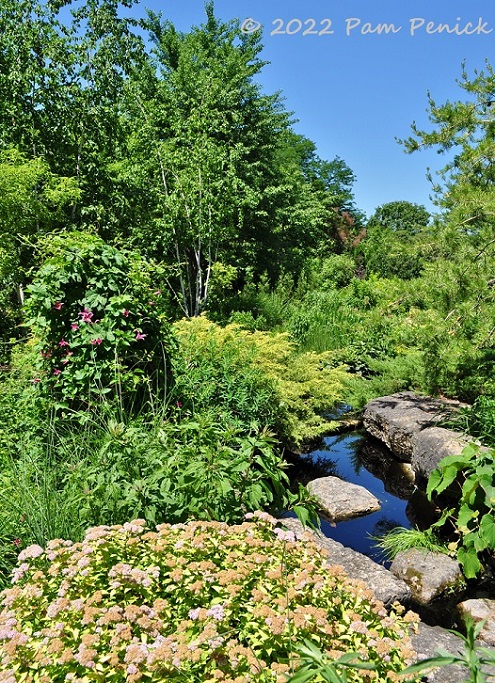
There’s nothing like water to draw the birds.
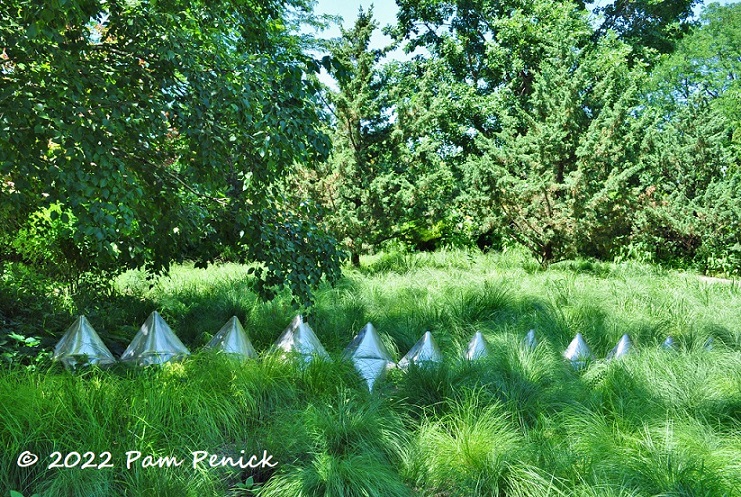
A toothy silver sculpture — or maybe the backbone of a subterranean creature? — appears in a green meadow.
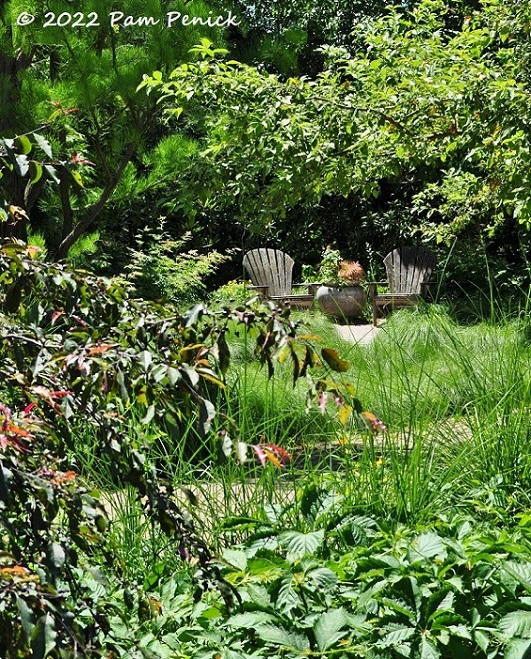
Another meadowy seating area
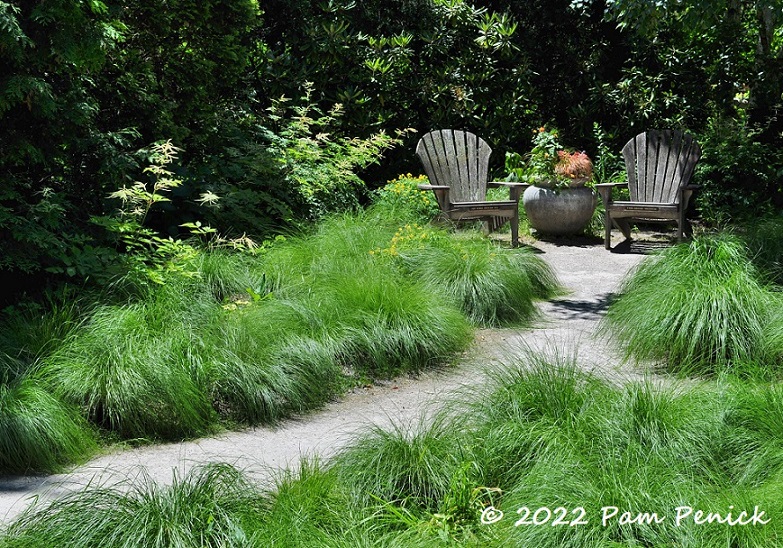
Prairie dropseed grass makes a billowy but peaceful setting for a couple of chairs.
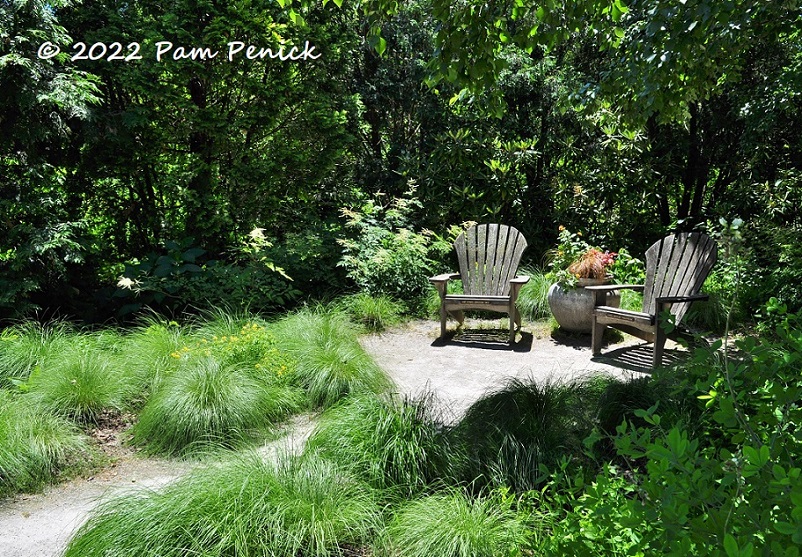
Wouldn’t this make a lovely small patio for a residential backyard — or front yard — too?
Up next: The golden Thai sala and tropicalesque garden at Olbrich. For a look back at Olbrich’s planted plaza, fountains, and rose garden, click here.
__________________________
Digging Deeper
Come learn about gardening and design at Garden Spark! I organize in-person talks by inspiring designers, landscape architects, authors, and gardeners a few times a year in Austin. These are limited-attendance events that sell out quickly, so join the Garden Spark email list to be notified in advance; simply click this link and ask to be added. Season 8 kicks off in fall 2024. Stay tuned for more info!
All material © 2025 by Pam Penick for Digging. Unauthorized reproduction prohibited.


Can’t remember if I mentioned it, but our new symbolic water garden is done based on the Olbrich method. So someone can plant into that gravel pond in the future if they wish to do it. Those gardens at Olbrich are looking great right now as they have some wonderful late summer plants in them.
What a brilliant — and thoughtful — solution, Linda. I’ll link to my post about your garden so people can go see. https://www.penick.net/digging/?p=82573
Will the native Texas? Prairie Drop seed grass work in full sun in the Tyler area? Would like to try a small strip of the gravel garden to see if it would work here, slowly getting rid of grass. If not native here, what would you suggest in its place?
I think prairie dropseed grass may be only marginally native to Texas. I feel like we’re maybe at its far-southern range? Not sure exactly. Do you follow Plano Prairie Garden? He would be a great resource for you from North Texas. I would suggest pine muhly, which PPG shared with me years ago. It’s now one of my favorite smallish native grasses for full sun.
I first read about mulching with gravel in Lauren Springer’s 1994 book “The Undaunted Garden, Planting for Weather-Resilient Beauty”. I live in Abilene, and our extreme weather and poor clay soil had killed many of my gardening attempts, so I was desperate for something else. The difference is I plant then mulch with the gravel instead of planting directly in to the gravel. One of the benefits is that when pecans fall, most land on top of the gravel instead of making a million unwanted volunteers.
I love Lauren’s book — such an inspiring read, even all these years later. As you noted, the method of planting and then mulching with gravel is different from the method Jeff Epping used in the Olbrich garden, where plants are planted directly in a thick layer of gravel. But it sounds like the gravel-mulching method has worked well for you in keeping squirrels from planting pecans everywhere!